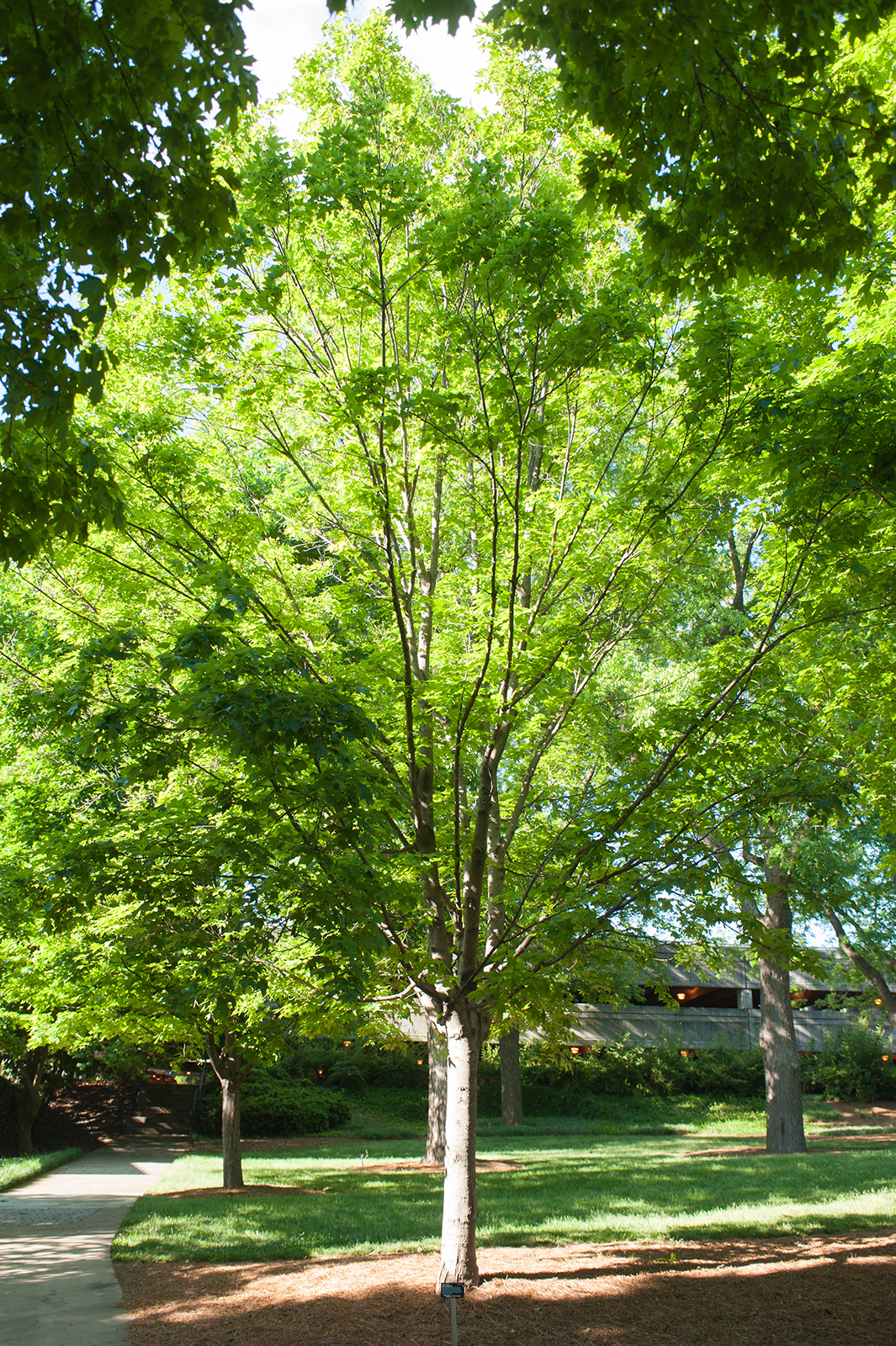
Georgia Tech’s arboretum status — official as of March — was an organic development stemming from a tree inventory in 2012.
Georgia Tech’s arboretum status — official as of March — was an organic development stemming from a tree inventory in 2012. Data in hand, the question became, “Now what?” Campus “treekeepers” hope the questions will keep on coming.
If Hyacinth Ide had walked around Georgia Tech’s campus before hiring on with Landscape Services in 1999, he might not have accepted the job. “Luckily,” said the associate director of Landscape Services and Fleet Services, “my former boss said there was a plan to focus on landscaping, and we have done it.”
Have we ever. Tech’s certification as a Level II Arboretum is just the latest feather in the Institute’s gardening cap — on top of Tree Campus USA, Bee Campus USA, and 3 Star Landscape Management Accreditation.
12,000 Trees and Calculating
Georgia Tech’s 2010 Landscape Master Plan included a goal to increase the tree canopy to more than 50 percent. Planners knew the campus had a long way to go, but how far? The last time Tech had inventoried its trees was 2004.
To get a new baseline, Landscape Services, Capital Planning and Space Management, and the Center for Geographic Information Systems (CGIS) came together to design a plan for documenting and measuring every tree on campus — with 40 different data points for each one.
A vendor was hired to execute the plan based on an estimated 7,000 trees, but the contract soon had to be revised — it turned out the campus had almost 12,000 trees.
The A Word
With new information in hand, one of the first decisions — aided by technology — was to make the inventory a moving picture, rather than a one-off snapshot. Since 2013, landscape crews have been armed with handheld GPS devices on which they record tree plantings, removals, and maintenance.
“We don’t know of any other institutions with an inventory that is as up-to-date as ours,” Ide said.
The first person to say the A word — according to several members of the Tree Campus USA committee — was Executive Vice President of Administration and Finance Steve Swant.
“Once we had this incredible database, he’s the one who asked what it would take to be an arboretum,” said Jason Gregory, senior education facilities planner and landscape architect with Capital Planning and Space Management. “So we started looking into it and saw that it really wouldn’t be too difficult with all the documentation and protocol we already had in place.”
As the project evolved, Gregory said, so did the questions surrounding it. “We needed to define why we wanted to be an arboretum — why it was important,” he recalled. “We realized we could break that down to the individual tree: What does it actually do and how does it perform in the landscape? Can we teach people about that and use this information across campus?”
Arboretum — Georgia Tech Style
Ramachandra Sivakumar, who goes by Siva, is a senior research engineer at CGIS. He manages Tech’s site license for GIS software and promotes its use for academic and research projects across campus, so the tree inventory and arboretum project have been a natural fit for his expertise.
Before all this, he’d never really paid much attention to trees beyond their beauty and the shade they provide. Now, he is working with computer models that can look at a geographic area of trees and calculate such benefits as carbon sequestration, heat mitigation, air purification, and rainfall interception for stormwater management.
“There’s even a program that can look at health impacts,” he said. “So knowing the importance of our campus tree canopy, we have greater motivation to preserve it or add to it.”
To ensure the numbers stay up to date, the campus has been divided into five zones and has set up a five-year schedule during which, zone by zone, each tree will again be measured and evaluated according to the 40 data points.
Gregory, like Siva, has been making presentations in hopes that faculty and students will find ways to use the arboretum and database as a springboard for innovative projects.
“That’s going to be part of the fun,” Gregory said. “If you were at UGA, you’d have the horticulture or agriculture people looking at this. But Georgia Tech — we’re a completely different arena.”